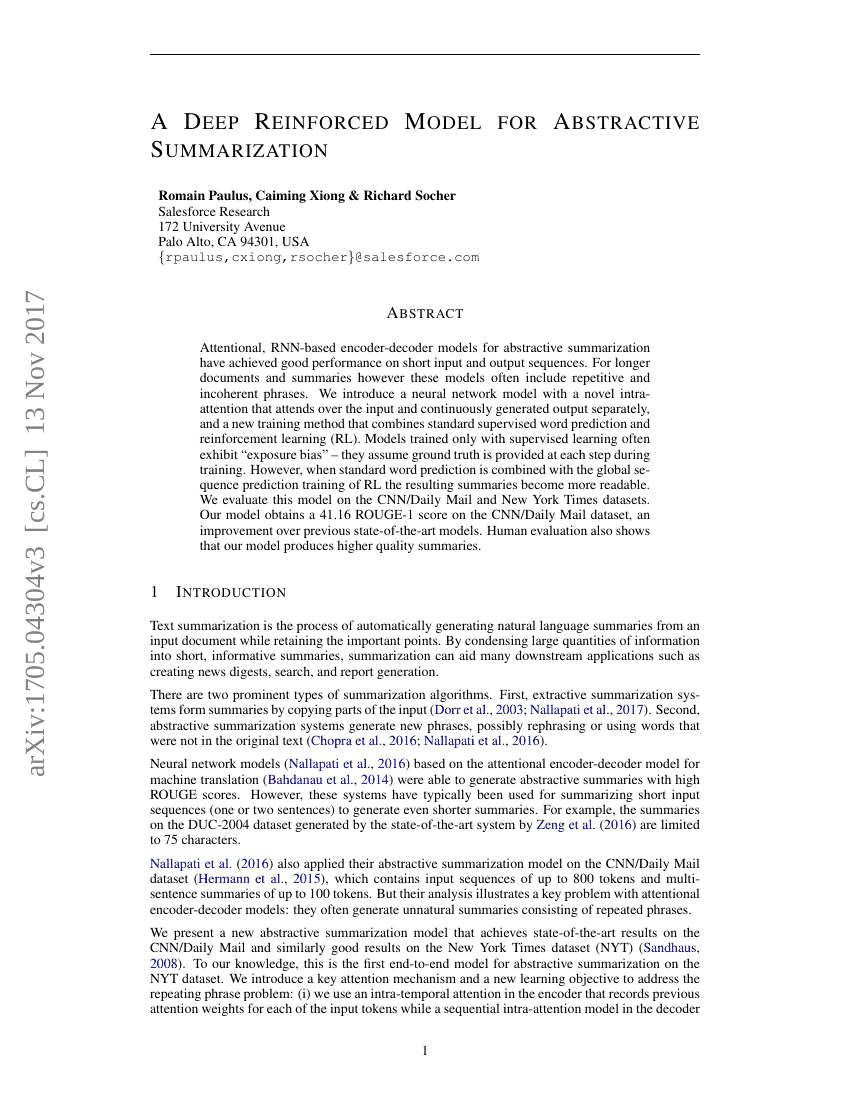Command Palette
Search for a command to run...
Romain Paulus; Caiming Xiong; Richard Socher

Abstract
Attentional, RNN-based encoder-decoder models for abstractive summarization have achieved good performance on short input and output sequences. For longer documents and summaries however these models often include repetitive and incoherent phrases. We introduce a neural network model with a novel intra-attention that attends over the input and continuously generated output separately, and a new training method that combines standard supervised word prediction and reinforcement learning (RL). Models trained only with supervised learning often exhibit "exposure bias" - they assume ground truth is provided at each step during training. However, when standard word prediction is combined with the global sequence prediction training of RL the resulting summaries become more readable. We evaluate this model on the CNN/Daily Mail and New York Times datasets. Our model obtains a 41.16 ROUGE-1 score on the CNN/Daily Mail dataset, an improvement over previous state-of-the-art models. Human evaluation also shows that our model produces higher quality summaries.
Code Repositories
Benchmarks
| Benchmark | Methodology | Metrics |
|---|---|---|
| document-summarization-on-cnn-daily-mail | ML + RL (Paulus et al., 2017) | ROUGE-1: 39.87 ROUGE-2: 15.82 ROUGE-L: 36.90 |
| document-summarization-on-cnn-daily-mail | ML + Intra-Attention (Paulus et al., 2017) | ROUGE-1: 38.30 ROUGE-2: 14.81 ROUGE-L: 35.49 |
| text-summarization-on-cnn-daily-mail-2 | ML+RL, with intra-attention | ROUGE-1: 39.87 ROUGE-2: 15.82 ROUGE-L: 36.90 |
Build AI with AI
From idea to launch — accelerate your AI development with free AI co-coding, out-of-the-box environment and best price of GPUs.